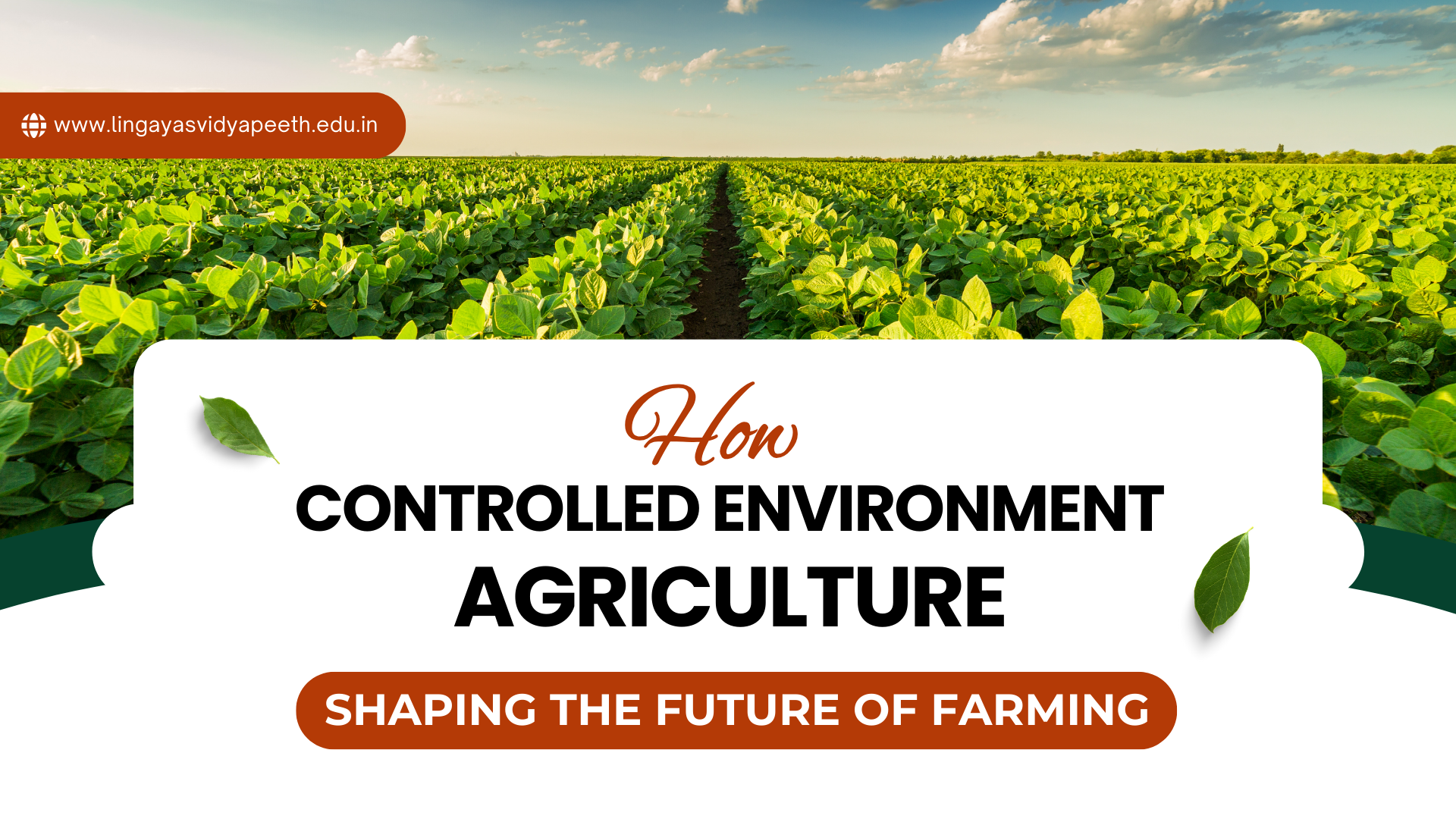
Home » How is Controlled Environment Agriculture (CEA) Shaping the Future of Farming?

Imagine cultivating juicy strawberries in the heart of a scorching desert, or harvesting crisp lettuce year-round, regardless of the blizzard raging outside. This isn’t science fiction; it’s the reality of Controlled Environment Agriculture (CEA), a revolutionary approach that’s transforming the way we grow food.
CEA encompasses various techniques for growing crops in controlled environments, including:
CEA is not a one-size-fits-all solution. Different techniques cater to various crops and applications:
While CEA offers numerous benefits, it also faces some challenges:
The future of CEA is brimming with exciting possibilities:
Conclusion-
Controlled Environment Agriculture is not just about growing food indoors; it’s about reimagining agriculture for a changing world. By offering greater control, efficiency, and sustainability, CEA presents a compelling solution for the challenges facing our food systems. As technology advances and consumer awareness grows, CEA has the potential to revolutionize the way we grow, distribute, and consume food.
Lingaya’s Vidyapeeth being one of the leading top colleges in Faridabad, Delhi NCR is the best choice for students who wish to pursue a master’s degree in agriculture. Lingaya’s Vidyapeeth provides students with hands-on training, research opportunities, and industry exposure. The university’s focus on interdisciplinary education, innovative teaching methods, and experiential learning ensures that students are well-equipped to meet the challenges of modern agriculture. Propel your career in the field of agriculture by enrolling in Lingaya’s Vidyapeeth now!
From
Dr. Nand Ram
Ph.D. & Post Doctorate (Soil Science)
School of Agriculture
Lingaya’s Vidyapeeth
Best Agriculture Colleges in Faridabad
RECENT POSTS
CATEGORIES
TAGS
Agriculture Agriculture future AI Architecture artificial intelligence Bachelor of Commerce BA English BA Psychology BTech AIML BTech CSE BTech Engineering Business management career Career-Specific Education career guide career option career scope Civil engineering commerce and management Computer Science Computer science engineering Data science degree education Engineering Engineering students English Literature english program Fashion Design Fashion design course Higher Education Journalism journalism and mass communication law Law career Machine Learning Master degree mathematics MBA MBA specialization Mechanical Engineering Pharmacy Psychology Research and Development students
University Address: Nachauli, Jasana Road, Faridabad, Haryana
For Admissions :
Toll Free: 1800-120-4613
Mobile : 8447744303 | 8447744304 | 8447744306 | 8447744309
8700003974 | 8700003411 | 8700003749
Address: C-72, Second Floor, Shivalik, Near Malviya Nagar,
Above HDFC Bank, New Delhi 110017
Landline No. - 011-46570515 / 45138169 / 41755703
Mobile No. - +91-7303152412 / +91-7303152420 / +91-9311321952
Jagmani Kutir, Ground Floor, Road No-1, Rajeev Nagar,
Near Darbar Marriage Hall, Patna-800024, Bihar
Contact No: 9818352069/ 8130120095
Mail: kanhaiya@lingayasvidyapeeth.edu.in
Copyrights © 1998 - 2025 Lingaya's Vidyapeeth (Deemed To Be University). All rights reserved.
It is important to note that the following email IDs and domains are fraudulent and do not belong to our university.
LV only conducts physical/online verification of any document related to examination on the following email id: